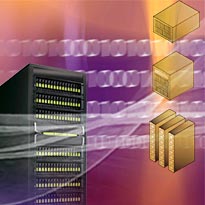Wikitip
Being an Exchange user, I am always very keen to know what’s new is coming with upgraded Exchange version. And no doubt I should feel like that only after all I am a fond of Exchange Server and a user of Exchange from last 5 years.
I started my journey with Exchange 2007. At that time I was working as a Network admin in ABC organization. Exchange 2007 was a good choice for us till Microsoft launched Exchange Server version 2010. Microsoft launched this upgraded version in year 2009.
Once that new version launched I decided to move on to the new version; so I suggested my bosses to adopt that. Exchange 2010 offers many enhancements to Exchange ActiveSync & Windows Mobile Devices. Just to convince my bosses for version 2010; I had to create a presentation where I mentioned all the most attention grabbing features and upgrades of Exchange Server version 2010. Below is the list of those features –
Outlook Webmail – Outlook webmail application is now the easiest way to check emails in just few clicks. Also this app is user friendly on other non-Microsoft browsers like Mozilla, Safari and all.
Legal Hold – The most eye catching feature of this version is Legal Hold. It provides administrators accounts those hold the power to confine users edited and deleted emails, appointments and tasks. Admin can perform this function from his own mailbox and personal archives.
Exchange Control Panel – Exchange Control Panel abbreviated as ECP. This is an element of Outlook Web App 2010 where an admin user can sit in their OWA screen and check their emails, contacts and calendar appointments but also can perform administrative functions.
Database availability groups – DAG i.e Database Availability Group is a group of upto 16 Exchange Server 2010 servers that are installed with the Mailbox server role. Each server that is a member of the DAG is capable of hosting active or passive copies of user mailbox databases that reside on servers in the group.
Storage Cost Saving – According to words of Microsoft – Exchange 2010 has 70% less disk I/O (input/output) than the prior version 2007. This is why; Microsoft suggests moving away from SAN storage solutions and adopting less expensive direct attached storage. This migration can be a good saving option for any business.
Voice mail transcription - Voice Mail transcription is a feature which allows user to receive voice mail messages. Voice Mail Preview enhances the existing UM (Unified Messaging) voice mail functionality by providing the text version of audio recordings. The recorded text is available in user’s Outlook email messages.
RBAC - RBAC stands for Role Based Access Control Model. RBAC is the permission model of Exchange 2010. RBAC enables grouping sets of actions into different roles.
Call answering rules - By using this feature end user can easily manage his incoming calls. Call answering rules are only applicable for incoming e-mail messages.
Personal archive – Data archiving of user’s personal mailbox data that is linked to the primary mailbox is the prime feature of Exchange 2010. This feature of Exchange 2010 is attracting lots of users.
Retention policies - Retention policies are the section of MRM technology. Microsoft Exchange Server 2010 comes with the MRM i.e. messaging records management feature. This MRM feature formulates it easier to keep email messages those are needed to fulfill with organization policy, government regulations, or legal needs, and to eliminate content that no longer has legal or business value.
Multi mailbox search – Users can use this easy to use Multi mailbox search in Exchange Control Panel to find out the email messages those contain specific keywords. To search such emails one should be the member of that Discovery Management role group.
Virtualisation - Exchange 2010 supports virtualisation, allowing consolidation. Server virtualisation helps in cost cutting. It also develops business continuity - when a virtual machine is down, computers can run on another virtual machine with no downtime.
My boss got convinced when he checked the above listed features and in couple of weeks we got our new Exchange version. Though it was tough to convince my bosses but I did!!!
Now with the about listed detailed features you can also easily convince your boss for the newer version of Exchange.
Author Description - Eve Frank is a techie blogger and currently working on Exchange tools of Stellar Server Tools. http://exchange.stellarservertools.com/
View Another Wikitip
| 


